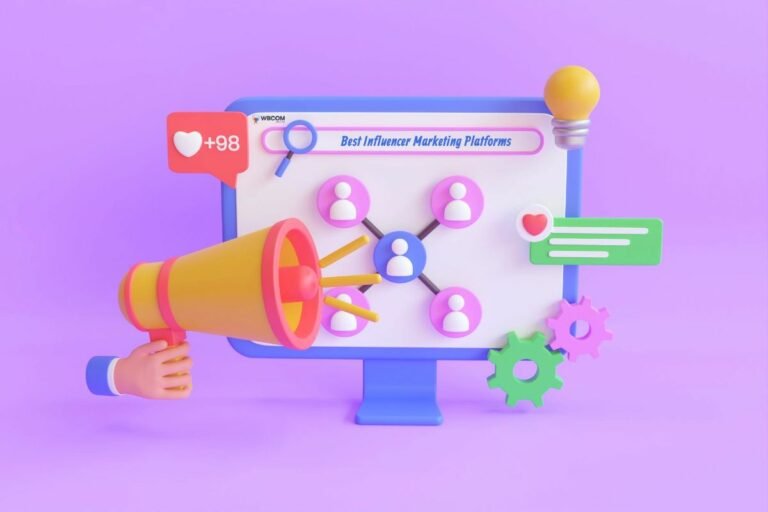An online community can present your brand superb benefits, from customer insights and trust to viral marketing and PR. It can grow sales and offer your brand a strong competitive edge. Online communities can also become a new revenue source on its own. The possibilities are so interesting that a few companies jump in and start community projects without a distinct knowledge of where they’re going. When that occurs, they frequently make mistakes that can finally ruin an online community.
This article will help you to avoid these traps. Below are listed some of the popular mistakes that occur while building online communities and the ways to evade them.
# 1 Expecting Results Too Soon
If you inaugurate your site today, don’t hope for results tomorrow. Building an online community is a gradual process, and installing the real website is the minimum of it. You need to raise a base of loyal users, attaining a specific momentum and volume. This process is time taking, and still more time will probably be required before the community begins displaying concrete business gains.
Before entering the project, you need to be ready for the long burden. Do you possess sufficient support and resources? Or will your company anticipate an instant return on the investment? If you need assessable results for the following week’s marketing conference, launching an online community perhaps isn’t the way to go. In that event, you might consider quicker options like marketing on available social networks. On the contrary, if you possess time to develop a real community, you’ll be generating a precious asset for your company’s future.
# 2 Getting Into Web 1.0 Thinking
Back in the ancient days of the Internet (that is, some years ago), companies used to pen marketing content, post it online, and hope people would read it. That thinking relates to Web 1.0 thinking. Web 2.0 concerns user interaction – websites where users can take part and post their individual content.
Plenty of companies include what they term “community” pages in their websites and utilize them to publish articles, announcements, recipes, horoscopes, photos, and anything else. Though the content may be exciting, the outcome is more of an online magazine or notice board than a community. It’s a monologue instead of a conversation. The company is speaking, and the sole activity presented to web users is reading. A genuine online community is a conversation whereby users actively participate.
Online magazines and brochure websites occupy their place, though. You can post your company brochure online if you desire. However, that’s not an online community, and it won’t deliver the same benefits. Naming it a community does not make the difference. If you desire a true online community, you have to offer website users a prominent role.
# 3 Self-Centeredness
What type of online community would suit your company? One where hours are spent by users completing detailed surveys concerning your products? One that highlights ads for your recent offers? Construct a community on the basis of this type of thinking, and you’re probable to encounter a problem: None will desire to join. You have to present something for your users, also – a cause for them to sign up and to return constantly.
An online community involves relationships – among your brand and the users, among one user and another, and likewise. Relationships need time to flourish. Therefore, the efficacy of your project lies on building a community that’s enjoyable or helpful enough not just to draw users, but also to retain them with time.
Ensure that you’re beginning with a distinct knowledge of your website’s intended population, along with its requirements and demands. Perform some research. Brainstorm with persons in your focussed market. What appears exciting to you may not be exciting for them. Don’t forget that you’re working for 2 employers now: your company and your website members. And think about putting the members initially for a while. After you get a substantial population of dedicated, satisfied community participants, your chances for gaining from the website are increased.
# 4 Absence Of Recruitment Plan
If you develop it, will they arrive? Not essentially – at least, not by themselves. The Internet includes so many websites that attracting traffic to yours will take some effort, at least initially. These are a few of your options:
- Search engine marketing
- Rented mailing lists
- Viral marketing strategies
- Press releases
- Marketing on social networks like YouTube and Facebook
- Leveraging your company’s available corporate websites, ad campaigns, and customer mailing lists
Once you attain a specific level of activity, things probably will intensify. Website users will inform your friends regarding your splendid community, other websites will join yours, your Google rankings will rise, and new members will arrive by themselves. However, you require a scheme in place to start things.
Also Read: Self-Hosted vs Hosted eCommerce Stores: What’s Better for Your Business?
# 5 Not Generating Enough Activity
Simply getting a group of members registered in your community is not sufficient. You’ll also be required to keep a minimum level of activity on the website. If a user reaches the site and sees no transformation since his last visit, he may refrain from dropping by again. If he gets the feeling that he’s the sole one participating, he’s probable to lose interest quickly. So you have a problem by your side. The problem is circular – nobody wishes to attend a party if none else is there.
How can you overcome this problem? You may need to spend additional time and resources to build a lively environment in your community till you can develop a momentum that will permit it to run on its own. Bribe or coerce colleagues into taking part on the website. Increase the involvement of your community manager, reacting instantly and personally to member offerings so that users don’t feel neglected. And ensure that the activity happening is as viewable as possible. You might wish to organize the website so that recent content is shown in the most outstanding position, permitting visitors to view instantly what’s new.
Also Read: Best WordPress Finance Plugins
# 6 Under-Managing The Site

An online community doesn’t resemble a static website; you can’t simply set it up and think no more about it. Users will be connecting with it continuously, publishing content and interacting with each other. Further, they will be unable to manage themselves. They’ll have queries, require help – they may also pick up quarrels with each other or post unwanted material that you’ll require to remove. You must be ready to counter all of these likely problems. Whatever the certain goals of your community project, you’re improbable to assist your brand with a community loaded with spam and dissatisfied members.
At the beginning of your project, consider the requirement for a community manager. Based on your community model, you could begin with 1 part-time individual and be ready to grow. Your community manager will also require tools, including a means to approach users’ membership details, censor inadequate content, and block user accounts when essential.
Incidentally, if you’re intending to inaugurate a Bulgarian community, you’ll require a Bulgarian speaking community manager. This may seem obvious, but companies sometimes forget this detail of keeping someone present who speaks the members’ dialect.
Companies frequently downplay the vitality of community management. But excellent community management safeguards your investment and your reputation.
# 7 Over-Administering The Site

Certainly, members may use your community for publicly criticising your company. You can’t prevent them and it’s not advisable to even try.
Generally, Internet users hold that they possess the right to free speech online. They comprehend that communities have norms of civil behavior, and if you censor content that’s spam-like, pornographic, or else distinctly abusive, the community usuallly will approve. Though if it seems to members that content is being censored or influenced from corporate self-interest, they’ll rebel, if you permit denunciation of your company to be posted on your portal, the outcome really can be nice PR. You’re building an atmosphere of transparency that fosters trust.
The criticism can even be a chance for your company to post a cordial and useful response. If people are unable to publish their opinions on your website, they’ll likely publish them elsewhere. It may be much more beneficial for you to keep the discussion upon your company’s domain, where you can take part in the discussion on your own terms. Finally, the free information you receive by promoting honest feedback from your clients may be as precious to your company as the data emerging from traditional market analysis.
Part of arriving into Web 2.0 is slackening some control. If your company can’t cope with that, then you mustn’t start a community website.
# 8 Insufficient Technology
If your community registration form isn’t functioning, it can be practically guaranteed that not plenty of new members will subscribe. If the website is slow loading or faces constant downtime, the members possessed by you probably won’t stay around long. If you encounter database issues and drop member contributions, you may face a revolution.
Most online communities don’t require fancy technology, though they do require technology that operates. If you plan to hire a lot of users, ensure that your website can manage the volume. Don’t bother; as online communities get more popular, an increasing amount of ready-made technological solutions are existent. Unless you’re contemplating something truly unusual, you don’t need to spend on technical invention. Select a plain, stable solution that will promote what’s most vital in the community – communication and user participation. You don’t need to reinvent the wheel, but the wheel has to rotate.
# 9 Making Things Too Complex
A few generalizations regarding web users are worth bearing in mind:
They don’t wish to read instructions, and possibly won’t. Your site shouldn’t need an instruction manual.
Not all of them are rocket scientists (unless you’re inaugurating a rocket science community, in which case the odds are in your favor). Plan each feature of your community to be understood by the least intelligent section of your user group. If users become confused, they’re probable to leave. They simply may not experience like making the effort. If your website appears like plenty of work, a simpler site is forever only a click away.
Understand your user population, aim for the lowest common denominator, and make employiny your site as natural as possible. By eliminating obstacles to participation, you will immensely raise the activity level of your community.
# 10 Confusion And Dead Ends
Ideally, it should be plain to users instantly what your website pertains to and what they’re intended to do there. If they become perplexed or arrive at a dead end, they’ll exit. Don’t let that occur. At each point of the user’s visit, recommend specific actions they should adopt. When an activity ends, carry users to a fresh one. Ensure that your website activities are adequately open that they can’t become “used up.” A user must apparently get to continue forever.
Wrapping Up
The finest communities include one thing in common. They move around accepted standards, shared interests, and mutual concern over other members.
As we proceed through life in social situations or work, we often build communities or form a part of them. A few are exciting and dynamic, others appear to simply undergo the motions.
You can be more planned and thoughtful as you develop your community.
To begin with, set guidelines and community objectives. Next, invite the initial few members. Then design valuable content to fuel engagement. Finally, you’ll require to monitor key metrics in your community to assure its performance.
As you achieve this, you will be aiding your members feel linked to the services and products you sell, and to the international society in which we all reside.
… and that’s how you finish building a flourishing online community.
Interesting Reads:
WooCommerce Apps For Your Online Store






